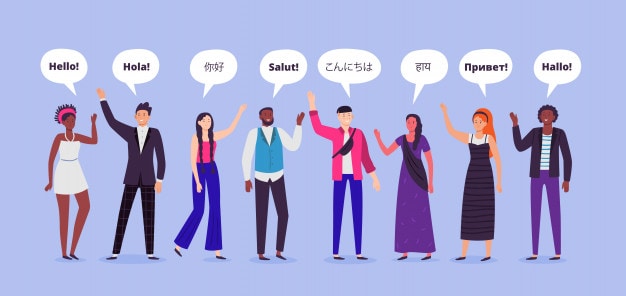
Types of Cultural Barriers in the Workplace

Discover the top cultural barriers that hinder workplaces Language, cultural norms and values, stereotypes, values and beliefs, and body language and signs and symbols can all create obstacles to effective communication and collaboration
As generations pass, culture continues to evolve and give rise to new subcultures. It encompasses music, cuisine, attire, religion, language, and more, all of which become ingrained in our daily lives. Despite the richness of each culture, when individuals from vastly different backgrounds come together, they may face a cultural barrier that hinders their ability to connect and form meaningful relationships.
Experiencing cultural barriers can cause a range of challenges and disruptions. For instance, if a student from the UAE were to visit America, one of the most significant cultural obstacles they would face is language, which could hinder their ability to express themselves effectively. This could lead to difficulties in even the most basic tasks, such as purchasing a ticket for public transportation or ordering food at a restaurant. To overcome cultural barriers, one must have an open mind and be willing to embrace new ideas and ways of thinking. This willingness to adapt can help individuals make necessary adjustments when interacting with different cultures.
Some Important Cultural Barriers
With globalization, people from diverse cultural backgrounds can now collaborate professionally. However, cultural differences can create significant obstacles, making it crucial to overcome these barriers for effective communication in the workplace.Some critical cultural barriers are as follows-
1. Language
Language is a crucial cultural barrier that can hinder effective communication and interaction between individuals from different cultures. Each culture has its unique language, which serves as a medium for expressing thoughts and ideas within the community.
When communicating in a language that is not your own, it can be difficult to fully express yourself and convey your intended message. This is why it is much easier to communicate in your native language. However, when dealing with individuals who speak a different language, it is essential to find a common language in order to avoid cultural barriers and potential conflicts. Without a shared language, misunderstandings can easily arise and cause problems both personally and professionally.
In cross-cultural communication, verbal language can often lead to confusion or misinterpretation, even with the assistance of translation. This can ultimately lead to conflicts. To overcome this barrier, it is important to have a basic understanding of essential words and their meanings in order to effectively express your thoughts.
A shared language is a powerful tool in the workplace as it influences how employees interact, participate, and communicate. It is important to use common gestures and expressions, as well as asking for clarification when needed, in order to effectively overcome any cultural obstacles.
2. Cultural norms and values
Culture is defined by its values and norms, which can vary greatly from one society to another. These elements are fundamental to a society's identity, reflecting its unique history, beliefs, and traditions. The differences in values and norms between cultures can be attributed to the varied experiences and perspectives that have shaped each society's understanding of truth and belief.
In Asian cultures such as those found in India, Pakistan, Bangladesh, and the UAE, familial bonds are highly valued, resulting in many individuals living with their families throughout their lives. This stands in contrast to Western cultures where it is common for people to leave home at a young age and pursue independent lives. Additionally, Asian countries tend to have a more crowded environment as part of their cultural norms, while countries like the United Kingdom and United States do not. It is worth noting that compliments towards women in the UAE are viewed as a direct insult, whereas in Western cultures, they are seen as a form of appreciation.
It is crucial to acknowledge that cultural differences exist among regions, which leads to varying norms and values. These differences can create a significant barrier, hindering effective communication and understanding. To overcome this obstacle, it is imperative to gain a deep understanding and appreciation of the cultural norms and beliefs of the people in question.
3. Stereotypes
Rewritten: Stereotypes are a major cultural barrier that can be based on age, religion, race, gender, and nationality. These preconceived notions often create inaccurate and unfair perceptions of specific communities or individuals. Unfortunately, in certain regions such as Asia, the LGBT community is still marginalized and not fully accepted, leading to limited interactions and disapproval of same-sex relationships.
In Western societies, such as the United States, there is a more open-minded and liberal attitude towards same-sex relationships, with acceptance and interaction with the LGBT community being common. Stereotypes, whether positive or negative, can act as cultural obstacles, with positive stereotypes sometimes leading to inaccurate assumptions and beliefs.
Many societies claim to hold their women in high regard, but it becomes apparent upon closer inspection that these women are often not granted the freedom to pursue professional careers or even leave their homes. What good is this supposed respect if it does not allow women to live as they choose?
While Italy is renowned for its art and culture, many Italians themselves are not well-versed in their own heritage and artistic traditions. To overcome cultural barriers, it is important to resist stereotypes and embrace cultural diversity with positivity.
When we stereotype, we risk developing prejudiced attitudes towards other cultures, which can have negative consequences. People tend to categorize stereotypes as either positive or negative, and may treat individuals accordingly with either respect or disrespect.
4. Values and beliefs
Beliefs play a significant role in shaping the values of an individual, which ultimately determines their behavior. Cultural differences also influence what is considered acceptable behavior, such as the act of shaking hands being commonplace in some countries while being frowned upon in others where physical contact is avoided.
The stereotype that Asians excel in science and math is often perpetuated, but it is important to remember that it is not a universal truth and should not be applied to every individual you encounter. Cultural differences, including varying religious beliefs and societal norms, can create barriers to understanding and communication. Our actions and behaviors are shaped by the values and beliefs we learn from our respective cultures.
The values and beliefs of different cultures can significantly impact one's interests, ambitions, and career. Overcoming cultural barriers in effective communication requires accepting and understanding these differences with an open mind.
5. Body language and signs and symbols
One's cultural upbringing is evident in their mannerisms, body language, and gestures, both consciously and unconsciously. These nonverbal cues add depth and context to spoken words.
In order to avoid misunderstandings caused by cultural differences, it is important to be aware of what may be perceived as incorrect body language. For instance, while eye contact is considered necessary in countries like the United States and Europe, it can be seen as impolite and disrespectful in other cultures such as Japan and UAE. It is crucial to understand the cultural norms and expectations when it comes to displaying emotions and non-verbal communication, which can also include signs and symbols.
In cross-cultural communication, gestures can hold different meanings and significance. A simple thumbs-up can be a powerful gesture of approval or positivity in many cultures, but it can also be a source of offense or insult in others. For instance, in Bangladesh, a thumbs-up is considered impolite and offensive. Therefore, it is crucial to be mindful of cultural differences in nonverbal communication to avoid any unintended misunderstandings or conflicts.
Conclusion
Rewritten: Coordinated meaning and action are spread through culture, but cultural barriers demonstrate the differences between distinct societies. These variances lead to diverse communication and interaction styles among people from different cultural backgrounds. In today's era of globalization and digital media, it's crucial to address and overcome cultural barriers quickly so that everyone can effectively participate and perform on a unified platform.
NEXT
Self-Disclosure
PREV
Lack of communication
START
What is Communication













